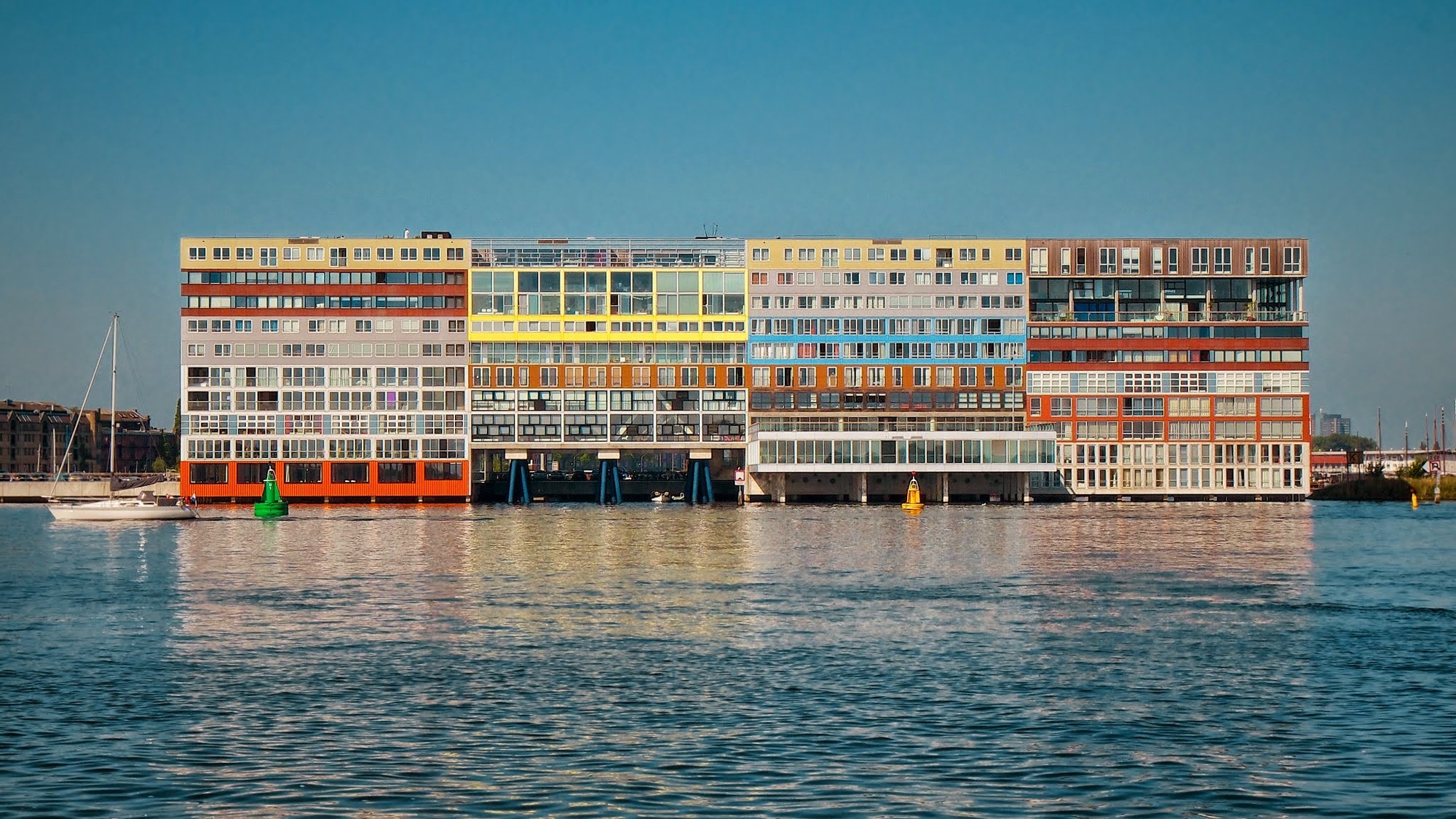
As modernist architects broke free from vernacular architecture and developed a homogenized international style, many created sterile spaces and places out of touch with the decorative warmth of historical forms of human inhabitation. Negative reactions to the brutality of Modernist spaces encouraged architectural movements such as post-modernism and deconstructivism, but these never managed to usurp the rational modernist box as a dominant architectural paradigm.
However, the intended machine-like precision of these buildings has often become unintentionally humanized over time, through the addition of curtains, coloring, or even through accidental breakage and imperfect repairs or alterations. I believe that building on the successes and failures of modernism has spawned a new and previously unclassified architectural style: Pixelism. Find out what this new phenomenon is after the break.

Rise of Modernism
In a world swept by the change from manual labor to large-scale industry and the aftermath of WWII, architects were working within a new cultural environment – and with an updated material palette and construction techniques to match. Iconic figures such as Le Corbusier and Mies van der Rohe were influenced by industrial processes and new materials such as steel and reinforced concrete to create a modern architectural style.
One of the notorious products of Modernism, large-scale public housing projects such as Pruitt-Igoe in St. Louis, are often cited as a failure of the stylistic period. The large, bleak developments often created unpleasant (and even dangerous) environments due to a sense of alienation that the large homogeneous developments caused. When many of these failed projects were demolished, the residents’ personalization within pigeonhole units was exposed - the physical manifestation of the human need to differentiate themselves. One such example has been seen following the demolition of the Rabot towers in Belgium where the removal of the façade panes has unveiled brightly painted interiors, creating a sort of abstract artwork.

Responses to Modernism
There were a number of architectural stylistic movements that eschewed the brutality of modernism: firstly and most notoriously, the exaggerated historically-inspired formal gestures of the postmodernists, who sought to evoke the grandeur and humanity of classical architectural styles as a defiant move against their perception of modernism as bland and souless.
The often tasteless results achieved by the ironic architectural styling of the postmodern rebellion has motivated a later generation of architects to create the disassembled architectural compositions of Deconstructivism and the amorphic forms of Blobitecture. These structures are able to recreate the ornamental style of classical building (something eschewed by Modernist theory) within a contemporary vocabulary.

Pixelism: Moving Past Modernism?
Yet, none of these attempts at stylistic reform ever really managed to succeed modernism as a dominant aesthetic movement in architecture, with mutated offspring of modernism continuing to subtly permeate the field. Many advantages of modernism, such as efficiency and structural purity (form follows function), are still convincing in a contemporary architectural context. But architects had to find a way to anthropomorphize these rational structures in order to avoid the alienation that Modernism had often caused in the past.
The current generation of architects is obsessed with difference, albeit within a largely modernist underlying framework, and the contemporary architectural paradigm expands on the basic concepts of modernist theory as a mutational, rather than a reactionary style. Architects have begun to harness the power of seemingly random, yet curated abstractions as a way to convey information, identity, and individuality.

The uninterrupted masses and gridded oppression of modernist structures become a celebration of difference and texture. Deviances suddenly become integrated without showing subjugation, and the monotony of idealistic - but ultimately charmless - urban plans of Le Corbusier and Hilberseimer are distorted to promote difference, although the underlying constitution remains similar. Pixelism, although based on modernism, embraces heterogeneity, rather than hiding the contents of a diverse urban civilization behind staid and homogeneous facades and plans.
Our civilization is currently undergoing a radical change of similar proportions to the industrial revolution that created a new cultural ecosystem in which Modernist architecture was created - into a digital world with exponentially developing technology. Pixelism gives a glimpse of what architecture (or a city) might look like if we, as architects, really start to move past the modernist status-quo.
Jonathan Choe is an architectural designer at WOHA, an artist, urbanist, blogger, & high-rise gardener in paradise (AKA Singapore). This article first appeared on his website, urbanARCHnow.com

